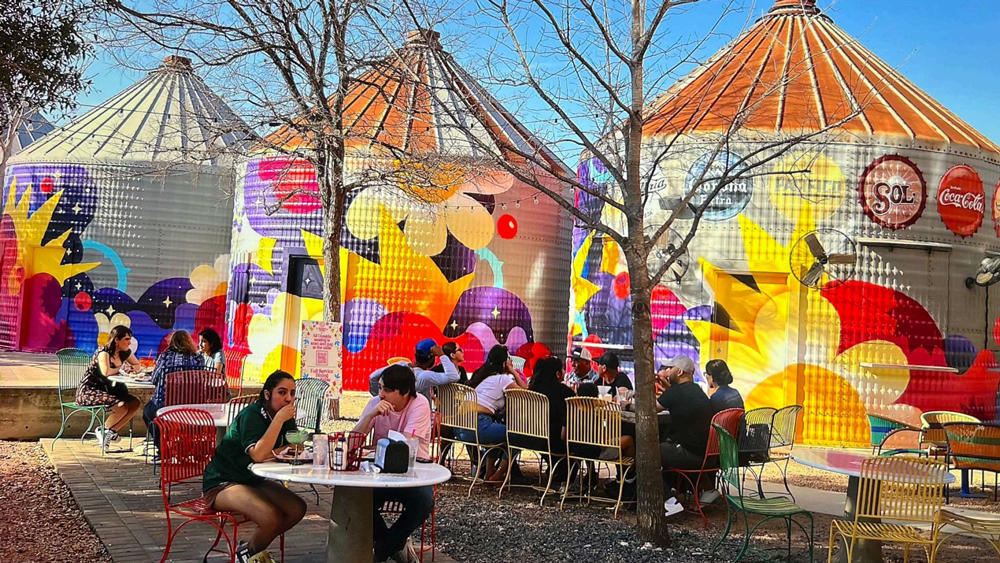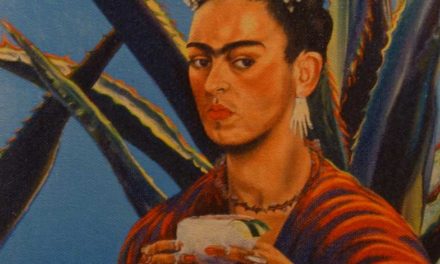Johnny Hernandez is an award-winning chef known for his food entrepreneurship, art appreciation, and philanthropy. Two of his popular La Gloria restaurants are at the Pearl and the San Antonio Airport. Hernandez was one of the few Latinos to serve as a Guest Chef at the White House when he cooked Mexican dishes for President Barack Obama’s Cinco de Mayo celebration.
Hernandez is a true believer that food and art make a great combination. His passion for bringing together excellent cuisine and Mexican art in the same setting is evident in his South Flores Street Frutera and Burgerteca next to Blue Star. Both are decorated with Mexican folk art and murals.
Hernandez’s commitment to maintaining Mexican culture and arts began early in his life and was influenced by his family. His dad, Johnny Hernandez Sr., founded Johnny’s Cafeteria in 1972 on Old Highway 90 deep in San Antonio’s Westside at a time when Mexican restaurants were few and far between in San Antonio’s Latino communities.
Young Johnny grew up with Tex-Mex food, the Texas version of Mexican cooking. As a young boy, Johnny demonstrated an understanding of entrepreneurship by taking candy and breakfast tacos from his dad’s kitchen to sell at school. His father recognized Johnny’s passion for the culinary arts and encouraged him to enroll in the prestigious Culinary Institute of America [CIA] in Hyde Park, NY. After completing his studies there, Hernandez headed West and worked at the Mirage Hotel & Casino in Las Vegas, Nevada and the Four Seasons Biltmore in Santa Barbara, California.
Hernandez returned to San Antonio in 1994 fully committed to beginning his own business. After establishing True Flavors Catering, he launched La Gloria restaurant near the famed Emma Hotel at the Pearl. At La Gloria, Hernandez serves food from the interior of Mexico. His knowledge of these foods resulted from traveling to Mexico over ten years with his mother, Teresa Hernandez, for missionary work. These trips and his work in preparing meals for youth at the Mexican summer camp gave him significant insights into the preparation of Mexican dishes.
The trips to Mexico unquestionably influenced Hernandez’s art education as well. However, his engagement with the Latino art community in San Antonio also stimulated his interest in art. Many Latino artists and writers frequent his restaurants, and he has friendships with many artists in Southtown and the Westside.
After visiting Southtown to view a mural Hernandez commissioned at Margarita Gardens next to his Burgerteca restaurant, I wondered where and how the San Antonio business community had found a way to contribute to the proliferation of murals.
In attempting to answer this question, I discovered that one hundred years ago Francisco Chapa, the proprietor of Chapa’s Drug Store in San Antonio, had commissioned a mural with the image of a lion on the side of his building. This mural on Santa Rosa Street faced the popular Market Square. It is considered the first public art mural in San Antonio, and, over time, Chapa’s customers referred to his pharmacy as Farmacia del Leon or the Lion Pharmacy. Few small Mexican American businesses had invested in public art before World War II. Chapa was the exception.
We know little about the next fifty years of San Antonio’s Latino public art history. In the early 1970s, Jesse Treviño helped to ignite a public art movement in the city’s Westside with his painting at Our Lady of The Lake University [OLLU]. After finishing an Associate Degree at San Antonio College, where he studied with Mel Casas, Treviño enrolled at OLLU in 1972. His pre-Vietnam War paintings had been limited to drawings and oils completed on an easel. Mel Casas, who had studied in Mexico City, preferred larger works and influenced Treviño to think big.
Jesse Treviño, two panels of La Historia Chicana [The Chicano History]. 1974. OLLU. Photo by Ricardo Romo.
While enrolled at OLLU, Treviño was encouraged to explore different mediums and formats. In his senior year, a student association raised funds for Treviño to buy 100 feet of canvas to paint a mural in the student union. Treviño completed La Historia Chicana [The Chicano History], a monumental mural in 1974, and it remains in the campus library. He later completed a ceramic tile painting at Market Square that honors Chapa Drugs and the famed Mexican theatre Teatro Nacional.
Johnny Hernandez is committed to keeping this Latino art and cultural tradition alive. A key member of Johnny Hernandez’s art team is Westside resident Claudio Aguillon. Harriett and I met up with Aguillon at the Bugerteca as he was completing artwork on the restaurant’s large windows facing the San Antonio River. Aguillon emigrated to the United States at the age of 13 from El Leoncito, a rural Mexican pueblo in the state of San Luis Potosi. He completed an Associate Degree at Palo Alto Community College and transferred to the University of Texas in Austin in 1995.
After earning a Bachelor of Fine Arts degree at UT Austin, Aguillon returned to San Antonio and worked for seven years as an art instructor at SaySi, an exciting youth art program. For the past thirty years, he has been painting murals in San Antonio. One can find his work at the Frost Bank Center, the San Antonio Airport, and numerous restaurants.
Working alongside Aguillon at Burgertec next to Blue Star this February was Ramon Ortiz, a resident of Irapuato, Guanajuato. Ortiz is a self-taught artist whose early art interests centered on graffiti. His bright colorful mural on three water tanks next to the Burgerteca focuses on the natural environment. The inclusion of stars, sunrises, and clouds represents patterns of creative layering.
Hernandez recognized Ortiz’s artistic talent on a trip to Mexico and has sponsored his visit to San Antonio to paint murals at the Burgerteca restaurant. Aguillion continues to work with Hernandez to develop the magical and whimsical environments found in the Hernandez restaurants.
The Burgerteca highlights the creative cuisine Johnny Hernandez is famous for. The restaurant is decorated with colorful tables and chairs and Mexican-style folk art in the pleasant courtyard and inviting outside seating area facing the San Antonio River trail. The talented artists and Chef Hernandez have created an exciting artistic setting for an enjoyable cultural experience.
Johnny Hernandez: The Art of Creating and Preserving Mexican Cuisine And Culture










